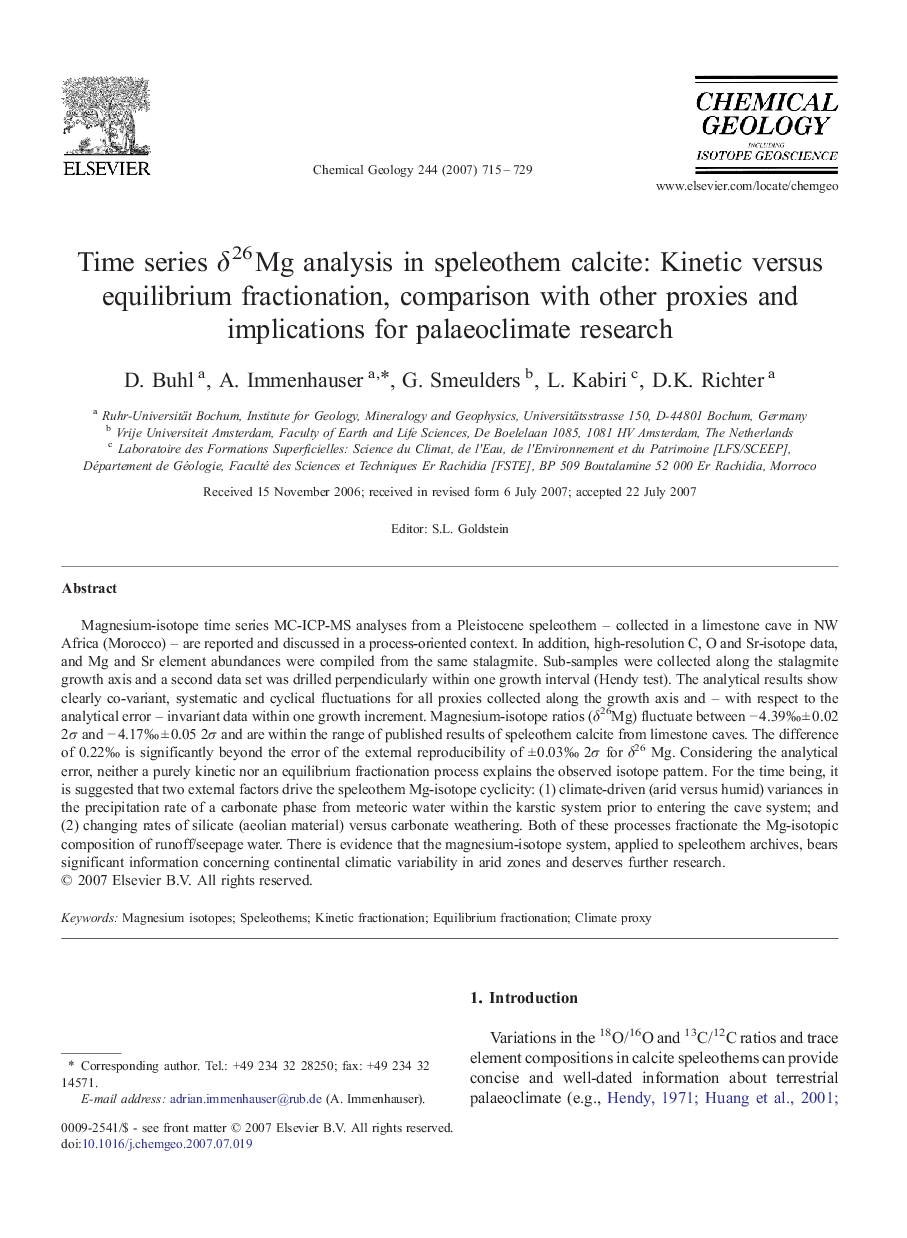| Article ID | Journal | Published Year | Pages | File Type |
|---|---|---|---|---|
| 4700917 | Chemical Geology | 2007 | 15 Pages |
Magnesium-isotope time series MC-ICP-MS analyses from a Pleistocene speleothem – collected in a limestone cave in NW Africa (Morocco) – are reported and discussed in a process-oriented context. In addition, high-resolution C, O and Sr-isotope data, and Mg and Sr element abundances were compiled from the same stalagmite. Sub-samples were collected along the stalagmite growth axis and a second data set was drilled perpendicularly within one growth interval (Hendy test). The analytical results show clearly co-variant, systematic and cyclical fluctuations for all proxies collected along the growth axis and – with respect to the analytical error – invariant data within one growth increment. Magnesium-isotope ratios (δ26Mg) fluctuate between − 4.39‰ ± 0.02 2σ and − 4.17‰ ± 0.05 2σ and are within the range of published results of speleothem calcite from limestone caves. The difference of 0.22‰ is significantly beyond the error of the external reproducibility of ± 0.03‰ 2σ for δ26 Mg. Considering the analytical error, neither a purely kinetic nor an equilibrium fractionation process explains the observed isotope pattern. For the time being, it is suggested that two external factors drive the speleothem Mg-isotope cyclicity: (1) climate-driven (arid versus humid) variances in the precipitation rate of a carbonate phase from meteoric water within the karstic system prior to entering the cave system; and (2) changing rates of silicate (aeolian material) versus carbonate weathering. Both of these processes fractionate the Mg-isotopic composition of runoff/seepage water. There is evidence that the magnesium-isotope system, applied to speleothem archives, bears significant information concerning continental climatic variability in arid zones and deserves further research.
